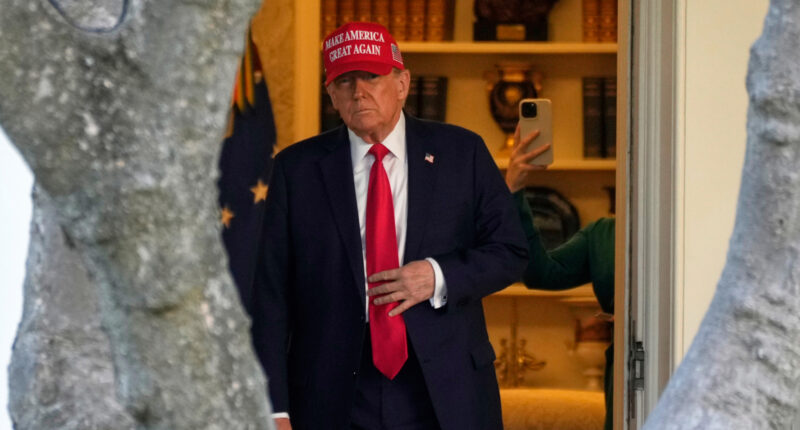On Wednesday, President Donald Trump raised tariffs on all steel and aluminum imports to 25%, asserting that the taxes would aid in the creation of U.S. factory jobs amidst fluctuating tariff threats that are unsettling the stock market and sparking concerns of an economic downturn.
In a move to disrupt and reshape global trade, Trump eliminated all exemptions from his 2018 tariffs on these metals, while also boosting the tariffs on aluminum from 10%. These decisions, guided by a directive from February, are part of a wider initiative. The U.S. president has imposed distinct tariffs on Canada, Mexico, and China, and intends to impose tariffs on imports from the European Union, Brazil, and South Korea by implementing “reciprocal” rates effective from April 2.
In response, the EU revealed its own retaliatory measures on Wednesday. Ursula von der Leyen, the President of the European Commission, highlighted that while the United States was imposing tariffs amounting to 28 billion dollars, the EU would counter with measures valued at 26 billion euros, approximately $28 billion. These measures, encompassing not only steel and aluminum items but also textiles, household appliances, and agricultural products, are set to come into force on April 1.
Trump told CEOs in the Business Roundtable on Tuesday that the tariffs were causing companies to invest in U.S. factories. The 8% drop in the S&P 500 stock index over the past month on fears of deteriorating growth appears unlikely to dissuade him, as Trump argued that higher tariff rates would be more effective at bringing back factories.
“The higher it goes, the more likely it is they’re going to build,” Trump told the group. “The biggest win is if they move into our country and produce jobs. That’s a bigger win than the tariffs themselves, but the tariffs are going to be throwing off a lot of money to this country.”
Trump on Tuesday threatened to put tariffs of 50% on steel and aluminum from Canada, but he chose to stay with the 25% rate after the province of Ontario suspended plans to put a surcharge on electricity sold to Michigan, Minnesota and New York.
In many ways, the president is addressing what he perceives as unfinished business from his first term. Trump meaningfully increased tariffs, but the revenues collected by the federal government were too small to significantly increase overall inflationary pressures.
Trump’s 2018 tariffs on steel and aluminum were eroded by exemptions.
After Canada and Mexico agreed to his demand for a revamped North American trade deal in 2020, they avoided the import taxes on the metals. Other U.S. trading partners had import quotas supplant the tariffs. And the first Trump administration also allowed U.S. companies to request exemptions from the tariffs if, for instance, they couldn’t find the steel they needed from domestic producers.
While Trump’s tariffs could help steel and aluminum plants in the United States, they could raise prices for the manufacturers that use the metals as raw materials.
Moreover, economists have found, the gains to the steel and aluminum industries were more than offset by the cost they imposed on “downstream” manufacturers that use their products.
At these downstream companies, production fell by nearly $3.5 billion because of the tariffs in 2021, a loss that exceeded the $2.3 billion uptick in production that year by aluminum producers and steelmakers, the U.S. International Trade Commission found in 2023.
Trump sees the tariffs as leading to more domestic factories, and the White House has noted that Volvo, Volkswagen and Honda are all exploring an increase to their U.S. footprint. But the prospect of higher prices, fewer sales and lower profits might cause some companies to refrain from investing in new facilities.
“If you’re an executive in the boardroom, are you really going to tell your board it’s the time to expand that assembly line?” said John Murphy, senior vice president at the U.S. Chamber of Commerce.
The top steel exporters to the U.S. are Canada, Mexico, Brazil, South Korea and Japan, with exports from Taiwan and Vietnam growing at a fast pace, according to the International Trade Administration. Imports from China, the world’s largest steel producer, account for only a small fraction of what the U.S. buys.
The lion’s share of U.S. aluminum imports comes from Canada.
Copyright © 2025 by The Associated Press. All Rights Reserved.

















